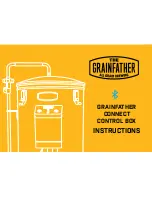
14
Aston®
Overhead Two Post Lift AL-100RH User’s Manual
4.3 Locking
●
The latch mechanism will 'trip over' when the lift
raises and drop into each latch stop. But, to lock the
lift you must press the lowering lever to relieve the
hydraulic pressure and let the latch set tight in a lock
position.
5. MAINTENANCE SCHEDULE
The following periodic maintenance is the suggested
minimum
requirements
and
minimum
intervals;
accumulated hours or monthly period, which ever comes
sooner. If you hear a noise or see any indication of
impending failure-cease operation immediately-inspect,
correct and/or replace parts as required.
WARNING-USERS
SHOULD
ALWAYS
INSPECT LIFTING EQUIPMENT AT THE START OF
EVERY SHIFT. THESE AND OTHER PERIODIC
INSPECTIONS ARE THE RESPONSIBILITY OF THE
USER.
5.1 DAILY PRE-OPERATION CHECK (8
HOURS)
Always lock the lift before going under the
vehicle. Never allow anyone to go under the lift when
raising or lowering. Read the safety procedures in the
manual.
The user should perform daily check.
ATTENTION! LOOK OUT! Daily check of safety latch
system is very important - the discovery of device failure
before needed could save you from expensive property
damage, lost production time, serious personal" injury
and even death.
Note: It is normal for an empty lift to lower
slowly. It may be necessary to add weight.
4.4 Lowering
During raising and lowering cycles: Closely
watch the vehicle and the lift, do not allow anyone to stay
in lift area and make sure the vehicle doors are closed.
●
Raise the lift until the latches clear the safety racks in
both sides.
●
Pull down and hold the safety release handle.
Warning: Always make sure safety latches on
both sides clear the rack at same time when pulling down
the release handle by adjusting the cable.
●
Press the lever at the power unit to lower the lift.
●
Check safety lock audibly and visually while in
operation.
●
Check safety latches for free movement and full
engagement with rack.
●
Check hydraulic connections, and hoses for leakage.
●
Check chain connections - bends, cracks-and
looseness.
●
Check cables connections- bends, cracks-and
looseness.
●
Check for frayed cables in both raised and lowered
position.
●
Check snap rings at all rollers and sheaves.
●
Check bolts, nuts, and screws and tighten.
●
Check wiring & switches for damage.
●
Keep base plate free of dirt, grease or any other
corrosive substances.
●
Check floor for stress cracks near anchor bolts.








































